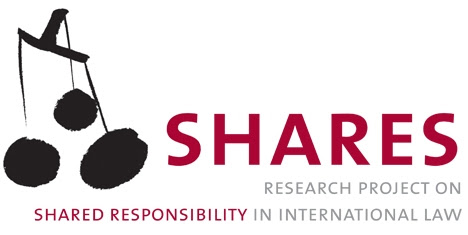Posted by: Have Nienke van der
On 14 October , High Commissioner for Human Rights Navi Pillay publicly stated that the ‘onus to take protective action’ for the benefit of the Syrian people now lies with the international community. This reference to the international community is a moderate formulation of what seem to be forceful intentions. In concrete terms, the statement can be seen as a call for action by the international community of states under a mandate of the United Nations Security Council (UNSC) based on the responsibility to protect (R2P). Pillay describes the continuing reports of assaults on and killings of civilians by the Syrian government as strong evidence that crimes against humanity are taking place. This is one of the four categories of violations for which operationalization of the R2P is warranted.
The R2P is not yet fully considered to be lex lata. Introduced by the ICISS in 2001, it has been a vehicle for the gradual acceptance of intervention in grave humanitarian crises. Where the notion of humanitarian intervention always remained controversial, the novelty of rephrasing sovereignty to responsibility and adding the focus on prevention and rebuilding seemed to slowly bend the will of the international community of states in favor of concerted action. In 2005, after numerous reports and debates on its shape and content, the concept was accepted in non-binding form in the World Summit Outcome Document. In 2007, pressure by the international community and a mediation process under the skilled leadership of former Secretary-General Kofi Annan helped halt post-election violence in Kenya. Despite it only being labeled as an R2P situation in retrospect, it is still widely seen as a model for implementation of the norm in practice.
Recently, supporters of the R2P have eagerly acclaimed the intervention in Libya as a new sign of the norm’s progressive acceptance. From the start, commentators referred to the crack-down in Libya as a clear-cut case fitting the model of the R2P. However, the precedent set in Libya has become a rather questionable point of reference now that the next crisis calling for operationalization of the R2P is discounted based on a political deadlock in the UNSC. Is this indecision perhaps proof of the fact that the R2P is merely a legal concept justifying politically motivated executive action which would be undertaken regardless?[1] Or is there hope that former Secretary-General Dag Hammarsjköl’s vision of neutral and impartial executive action by the UN will one day be realized? In any case, the hypocrisy of the current situation can hardly be ignored. The UNSC will not easily discard its stigma of acting arbitrarily and being driven by neocolonialism.
It seems that the only manner in which the much needed neutral basis for operationalization of the R2P could be strengthened is reforming the decision making process. A multitude of ideas to this effect, have already been forwarded, one more feasible than the other. An example is imposing an obligation to give reasons for a veto on the permanent members of the UNSC and the possibility of overriding a veto in certain cases.[2] Erecting an independent advisory body to determine when measures based on the R2P should be taken could also be of great added value. However, such drastic acts of reform are unlikely to take place without being inspired by a new grand twist in the history of mankind. It looks like it might take a crisis beyond Syria to bring the R2P back into fashion.
[1] Orford, Anne, International Authority and the Responsibility to Protect (Cambridge UP, 2011).
[2] Peters, Anne, ‘The Responsibility to Protect and the Permanent Five – The Obligation to give reasons for a veto’ in Nollkaemper, André and Julia Hoffman (eds), The Responsibility to Protect (awaiting publication, 2011).
